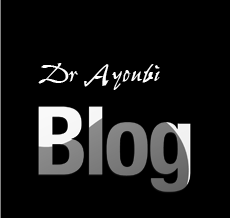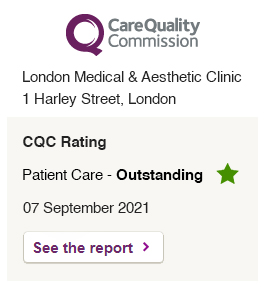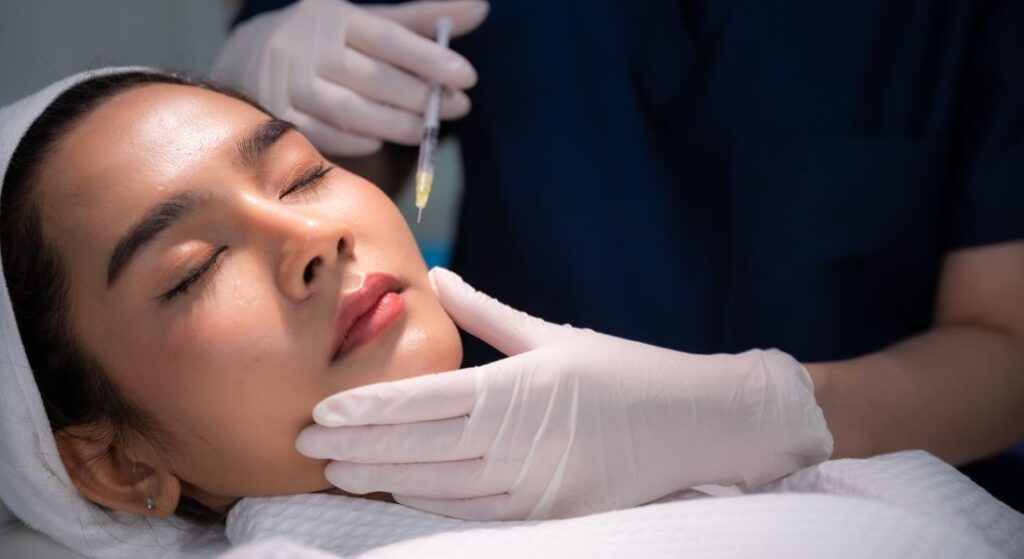
You’ve just had your Ellansé treatment and now you’re excited to see your skin look smoother, plumper, and more youthful. But before you jump straight back into your usual routine, there’s something important to remember: aftercare matters.
The way you treat your skin in the first few days after Ellansé can significantly influence how quickly you heal, how long your results last, and how natural they look.
In this guide, I’ll walk you through everything you need to avoid after Ellansé treatment, along with essential do’s and don’ts to help your skin recover beautifully.
Why Aftercare Is So Important
Ellansé is a collagen-stimulating filler that works differently from traditional hyaluronic acid fillers. It provides immediate volume while encouraging your skin to produce new collagen over the following months.
However, this process takes time and your skin needs the right environment to heal and regenerate properly.
– Aftercare helps:
– Reduce swelling and bruising.
– Prevent infection.
– Ensure the filler settles evenly.
– Maximise long-term collagen production.
Following your practitioner’s advice is key to achieving the most natural, long-lasting results possible.
What to Expect After Ellansé
Right after your treatment, it’s completely normal to notice:
– Mild swelling or redness.
– Tenderness at the injection sites.
– Slight bruising or tightness.
These side effects are temporary and typically fade within a few days. Most people return to work or normal routines straight away but certain activities should still be avoided during the healing phase.
The First 24 Hours: What to Avoid Immediately
The first 24 hours after Ellansé treatment are crucial. During this period, your skin is sensitive, and the filler is still settling into place.
Here’s what you should absolutely avoid:
1. Touching or Pressing the Area
Avoid touching, rubbing, or massaging the treated area unless your practitioner instructs you to. Pressure can cause the filler to move, leading to uneven results or irritation.
If you need to cleanse your face, do so gently with mild products and pat dry softly with a clean towel.
2. Applying Makeup
It’s best to skip makeup for at least 12–24 hours. Applying foundation or concealer too soon can introduce bacteria into tiny injection points, increasing the risk of infection.
Once redness and swelling subside, you can return to your normal skincare and makeup routine.
3. Exercise or Strenuous Activity
Avoid all vigorous exercise, including gym workouts, running, or yoga, for at least 24–48 hours. Increased blood flow and sweating can aggravate swelling and delay healing.
Light walking is fine, but anything that raises your heart rate significantly should wait a couple of days.
4. Alcohol
Alcohol thins the blood and dilates blood vessels, which can increase bruising and swelling. Avoid it for at least 24 hours before and after treatment.
5. Extreme Heat or Cold
Stay away from saunas, hot tubs, steam rooms, and cold packs for the first day. Extreme temperatures can interfere with blood circulation and affect how the filler settles.
The First Week: Aftercare Do’s and Don’ts
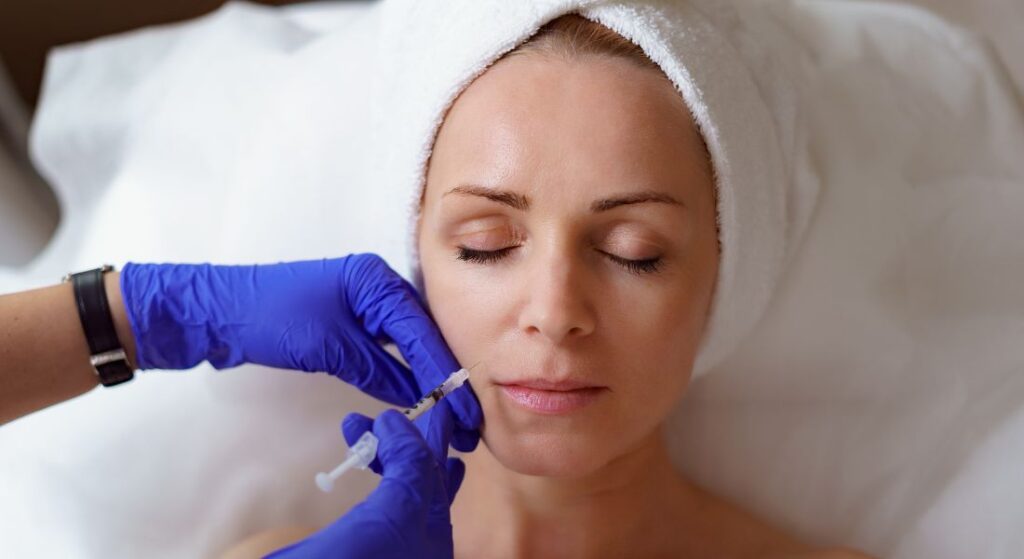
After the initial 24 hours, your skin continues to heal beneath the surface. This is when collagen production begins, so proper care remains vital.
1. Avoid Direct Sun Exposure
UV radiation can trigger inflammation and slow down healing. Try to stay out of the sun for at least a week after treatment. If you must go outside, wear a wide-brimmed hat and use a broad-spectrum SPF 30+ sunscreen daily.
2. Skip Facials and Exfoliation
Avoid facials, chemical peels, dermaplaning, or exfoliating scrubs until your practitioner advises it’s safe. Gentle cleansing and hydration are best during the initial healing period. These treatments can irritate your skin and disrupt the newly injected filler.
Stick to gentle cleansers and hydrating serums until your practitioner says it’s safe to resume other treatments.
3. Don’t Sleep Face Down
Sleeping on your face can put pressure on the treated areas and shift the filler. Try to sleep on your back with your head slightly elevated for the first few nights.
If you naturally move a lot while sleeping, consider using a travel pillow to help keep your head in position.
4. Avoid Smoking
Smoking slows down the body’s healing process and damages collagen the exact thing Ellansé is trying to stimulate. If you can, avoid smoking for at least a week after treatment, or longer for best results.
5. Limit Caffeine Intake
High caffeine levels can increase dehydration and swelling. It’s fine to have a cup of tea or coffee, but avoid overindulging in the first 48 hours.
6. Stay Hydrated
Drink plenty of water to help your body heal and support collagen formation. Hydration is one of the simplest yet most effective ways to maintain glowing, healthy skin after Ellansé.
Skincare After Ellansé: Gentle Is Best
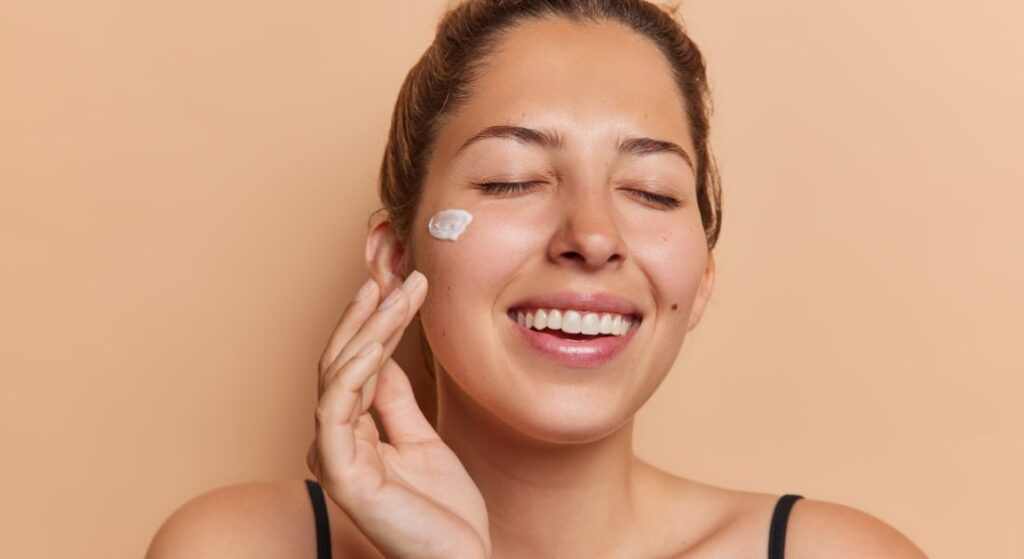
For the first week, keep your skincare simple and nourishing.
Do:
Use gentle, fragrance-free cleansers.
Apply soothing products like aloe vera or hyaluronic acid serum.
Use SPF daily, even if you’re indoors.
Avoid:
Retinol or acids (AHAs, BHAs, vitamin C) for at least 7–10 days.
Harsh exfoliants or alcohol-based toners.
Facial devices like rollers, gua sha, or cleansing brushes.
Your skin will be slightly more sensitive after treatment, so treating it kindly will help preserve your results.
What About Makeup and Skincare Products?
Once the initial redness and swelling subside typically after 24–48 hours you can reintroduce makeup and your usual skincare routine.
However, always ensure your brushes and applicators are clean to avoid bacterial contamination. If you’re unsure whether a product is suitable, ask your practitioner during your Ellanséaftercare consultation.
When Can You Resume Exercise?
Most people can safely return to light exercise after 48 hours, as long as swelling has reduced.
High-intensity activities like weightlifting, running, or HIIT should be resumed only when you feel comfortable or your practitioner advises. Listen to your body and increase intensity gradually. Sweat, friction, and increased body temperature can all interfere with recovery and filler placement.
If you notice any swelling returning after exercise, give your body an extra day or two to rest.
Can You Fly After Ellansé?
Flying is generally safe a few days after treatment once swelling has gone down. However, it’s best to wait at least 48–72 hours before boarding a plane.
Cabin pressure and dehydration can worsen swelling, so if you must travel soon after treatment, make sure to drink plenty of water and avoid alcohol.
Foods and Drinks to Avoid
Diet plays an underrated role in recovery. Certain foods and drinks can worsen bruising or delay healing, so for the first few days:
Avoid:
– Salty foods (they increase water retention).
– Spicy dishes (they can cause flushing).
– Processed sugar (it promotes inflammation).
– Alcohol (it dilates blood vessels).
Instead, focus on antioxidant-rich foods like leafy greens, berries, and citrus fruits which help your skin heal faster.
Can You Combine Ellansé with Other Treatments?
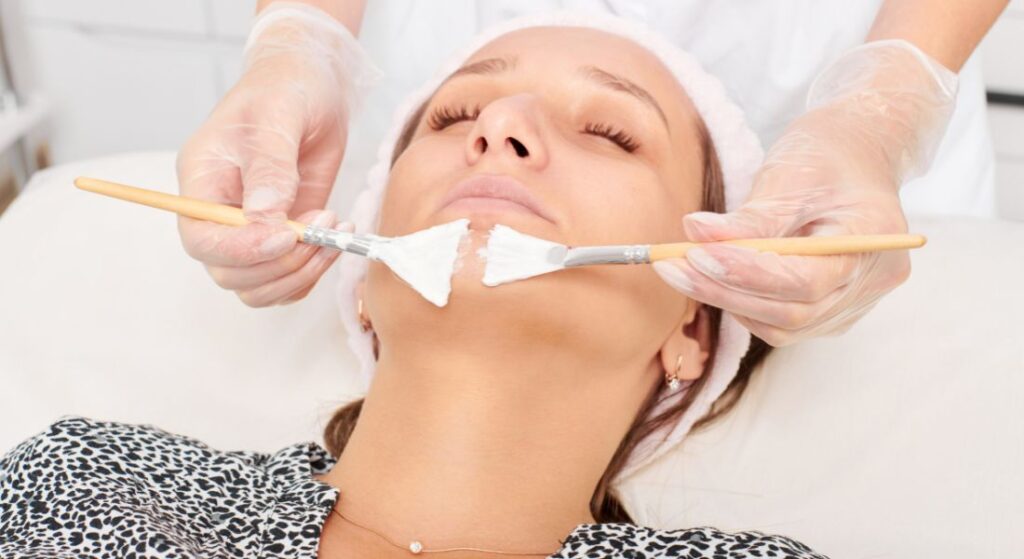
Yes, but not immediately. After Ellansé, your skin needs time to settle before undergoing other cosmetic procedures.
Wait at least:
– 2 weeks before facials or peels.
– 3–4 weeks before laser or microneedling.
– 4 weeks before Botox or other injectables in the same area.
Combining treatments too soon can cause inflammation or alter the filler’s placement. Your LMA practitioner will create a safe timeline for your aesthetic plan.
Managing Swelling and Bruising
Some swelling or bruising is normal after Ellansé, but there are simple ways to minimise it:
1. Apply a cold compress (wrapped in a cloth) for 10 minutes at a time during the first day.
2. Avoid aspirin or ibuprofen for the first 24 hours unless prescribed.
3. Sleep slightly elevated to reduce puffiness.
4. Use arnica cream (if approved by your practitioner) to help bruises fade faster.
If bruising persists beyond a week, don’t worry it will fade naturally as the skin heals.
Signs You Should Contact Your Practitioner
While complications from Ellansé are rare, you should always know when to reach out for advice.
Call your clinic immediately if you experience:
– Severe pain or swelling that worsens after 48 hours.
– Blanching (pale patches of skin) or discolouration.
– Signs of infection such as warmth, pus, or fever.
– Uneven lumps or bumps that don’t settle after two weeks.
At LMA Clinic, aftercare support is part of the service so don’t hesitate to reach out if you’re unsure about any symptoms.
How Long Does Healing Take?
Most of the visible recovery from Ellansé happens within a week. Swelling and redness typically disappear within 2–3 days, though your skin may feel slightly firm or tender for up to two weeks.
Remember, the filler continues to work beneath the surface for months as new collagen develops. You’ll notice gradual improvement over 3–6 months, with results lasting up to four years depending on the formula used.
How to Maintain Your Results
Once your skin has fully healed, maintaining your results is about consistency and protection.
Do:
– Keep up with good skincare and hydration.
– Always wear SPF.
– Eat a balanced, antioxidant-rich diet.
– Avoid smoking or excessive alcohol.
Don’t:
– Overuse strong exfoliants.
– Underestimate sun damage.
– Skip professional reviews or follow-ups.
Your practitioner may suggest touch-up sessions every few years to maintain optimal collagen support.
Expert Tip: Collagen Takes Time
Ellansé works differently from other fillers you won’t see the full results immediately. Instead, your skin gradually rebuilds collagen over several months.
During this time, avoid over-analysing your results too early. The subtle, natural improvement you see is a sign that your skin is truly rejuvenating from within.
Why Follow Professional Advice
Every skin type reacts differently, which is why professional aftercare guidance is so important. At LMA Clinic, your practitioner provides tailored instructions based on your unique treatment plan ensuring safety, comfort, and the most natural outcome.
By following these do’s and don’ts, you’ll not only protect your investment but also enjoy radiant, youthful skin for years to come.
FAQs:
1. How soon will I see results after Ellansé?
You’ll notice some immediate improvement right after your treatment because Ellansé provides instant volume. However, the full results take time because the product works by stimulating your skin’s collagen production. Over the next three to six months, you’ll gradually see smoother, plumper skin, and the changes are subtle yet natural. Patience is key here the best results unfold slowly as your skin rebuilds itself from within.
2. Can I wear makeup immediately after treatment?
It’s best to wait at least 12 to 24 hours before applying any makeup to the treated area. Your skin will have tiny injection points that are vulnerable to bacteria, and makeup too soon could increase your risk of infection. Once any initial swelling and redness settle, you can return to your usual makeup routine, making sure your brushes and applicators are clean to keep your skin safe.
3. Is it safe to exercise after Ellansé?
You should avoid vigorous exercise for the first 24 to 48 hours to prevent increased swelling or bruising. Light walking is fine, but anything that raises your heart rate significantly should wait. After a couple of days, you can gradually return to your normal fitness routine, but high-intensity workouts should be postponed for at least five to seven days to ensure the filler settles properly.
4. What should I do if I experience swelling or bruising?
Mild swelling or bruising is completely normal and usually resolves within a few days. You can use a cold compress on the area for short intervals during the first day to help reduce swelling. Sleeping with your head slightly elevated also helps. If you have any persistent bruising, creams like arnica may be used, but always check with your practitioner before applying any product.
5. Can I drink alcohol after my treatment?
It’s best to avoid alcohol for at least 24 hours before and after your treatment. Alcohol thins the blood, which can increase bruising and swelling and delay the healing process. After the first day, moderate consumption is generally okay, but excessive drinking should be avoided during the initial recovery period.
6. When can I return to facials, peels, or other skin treatments?
After Ellansé, your skin needs time to recover, so you should wait at least two weeks before having facials or chemical peels. Treatments like microneedling or laser therapy should generally be postponed for three to four weeks, and Botox or other injectables in the same area are best delayed for around four weeks. Your practitioner will guide you on the safest timeline based on your unique treatment plan.
7. Are there foods or drinks I should avoid?
During the first few days, certain foods can slow your recovery or increase swelling and bruising. Salty dishes, highly spicy meals, and processed sugar can all contribute to inflammation and water retention. Alcohol should also be avoided initially. Focusing on antioxidant-rich foods, such as leafy greens, berries, and citrus fruits, will support healing and collagen production.
8. Can I fly after having Ellansé?
Flying is generally safe once swelling has decreased, usually after 48 to 72 hours. Cabin pressure and dehydration can worsen swelling, so it’s important to stay hydrated during your flight and avoid alcohol if you’re travelling soon after treatment. Taking these precautions helps ensure your recovery continues smoothly while you’re on the move.
9. How long will my results last?
Ellansé is unique because it not only adds volume immediately but also stimulates your own collagen over time. Depending on the formula used, results can last up to four years. The gradual improvement happens over several months, so it’s normal if you don’t see the final outcome right away. Regular follow-up appointments and touch-ups, if recommended by your practitioner, will help maintain your results for the long term.
10. When should I contact my practitioner about concerns?
Although complications are rare, it’s important to know when to reach out. If you experience severe pain, unusual swelling beyond 48 hours, pale or discoloured patches, signs of infection like warmth or pus, or lumps that don’t settle after two weeks, you should call your clinic immediately. Your LMA practitioner is there to guide you and ensure your skin heals safely, so don’t hesitate to get advice whenever you’re unsure.
Final Thoughts: Caring for Your Skin After Ellansé
Taking proper care of your skin after Ellansé treatment is essential to ensure the best possible results. Following the do’s and don’ts, avoiding excessive pressure, heat, or harsh skincare, and giving your skin time to heal all contribute to smoother, plumper, and longer-lasting effects. Remember, the first few days are the most critical, and patience during the collagen-building process will reward you with subtle, natural improvements over the coming months.
Ellansé is more than a filler it’s a collagen-stimulating treatment that works with your skin to restore structure, firmness, and elasticity. By respecting the aftercare guidance, staying hydrated, protecting your skin from the sun, and following professional advice, you maximise the longevity and quality of your results.
At the London Medical & Aesthetic Clinic, every Ellansé treatment is customised to your unique facial anatomy and long-term goals. Our experienced practitioners ensure your results are natural, balanced, and harmoniously refreshed. If you’re considering Ellanse treatment, you can contact us at the London Medical & Aesthetic Clinic to discuss your personalised plan and discover how this innovative treatment can safely restore youthful volume, stimulate collagen, and deliver lasting, rejuvenated skin.
References:
1. Guo, J., et al. (2023). Injectable fillers: current status, physicochemical properties, and future perspectives. Journal of Cosmetic Dermatology, 22(1), 1-10. https://pmc.ncbi.nlm.nih.gov/articles/PMC10413051/
2. Bachour, Y., et al. (2021). The Aetiopathogenesis of Late Inflammatory Reactions Following Injectable Fillers. Journal of Clinical Aesthetic Dermatology, 14(11), 22-28. https://pmc.ncbi.nlm.nih.gov/articles/PMC8316155/
3. Guo, Y., Wei, W., Li, Q., Tao, C., Li, X., Zhang, A., & Jin, P. (2022). Efficacy and safety of hyaluronic acid fillers for lip augmentation in a Chinese population. Journal of Cosmetic Dermatology, 21(5), 1959–1966. https://pubmed.ncbi.nlm.nih.gov/35132743/
4. de Melo, F., Nicolau, P., Piovano, L., Lin, S.L., Baptista-Fernandes, T., King, M.I., Camporese, A., Hong, K., Khattar, M.M., & Christen, M.O. (2017). Recommendations for volume augmentation and rejuvenation of the face and hands with the new generation polycaprolactone-based collagen stimulator (Ellansé®). Clinical, Cosmetic and Investigational Dermatology, 10, 431–440. https://pubmed.ncbi.nlm.nih.gov/29184426/
5. Christen, M.-O. and Vercesi, F. (2020) ‘Polycaprolactone: How a Well-Known and Futuristic Polymer Has Become an Innovative Collagen-Stimulator in Esthetics’, Clinical, Cosmetic and Investigational Dermatology, 13, pp. 31–48. Available at: https://europepmc.org/article/med/32161484

